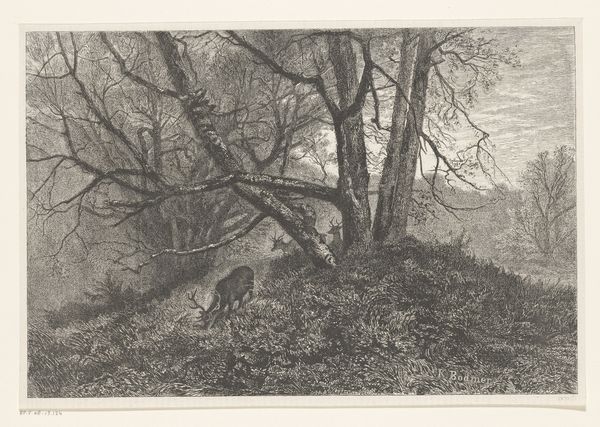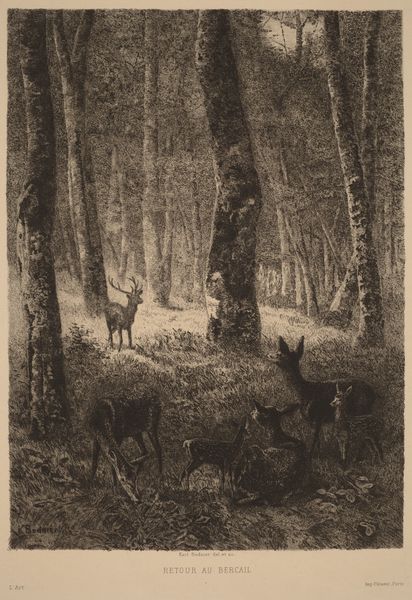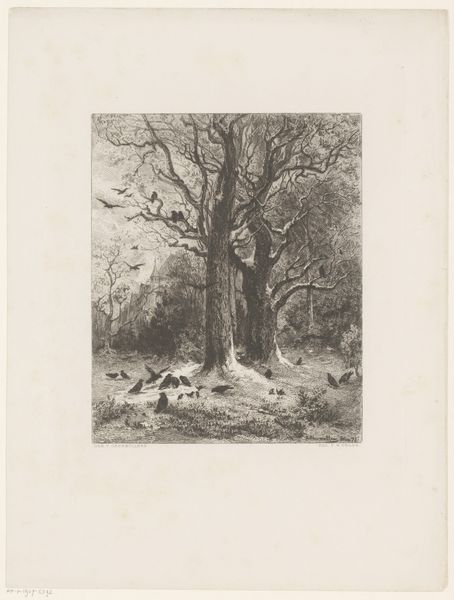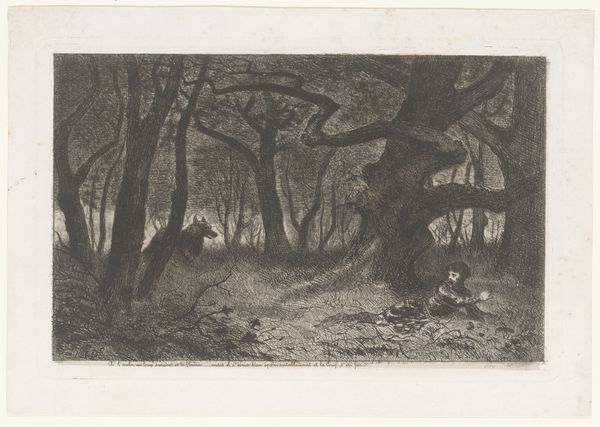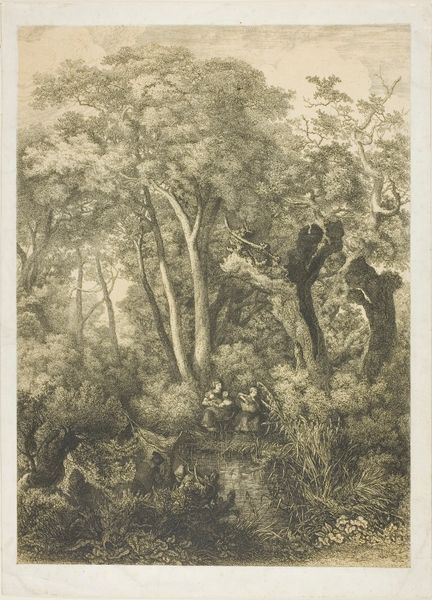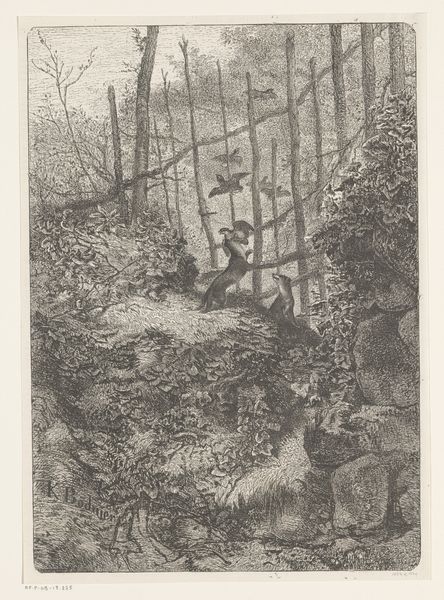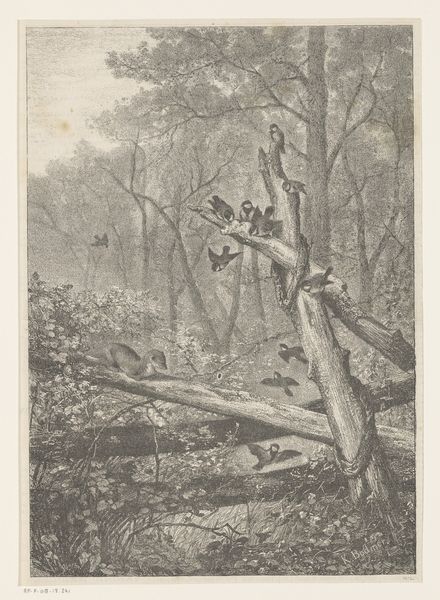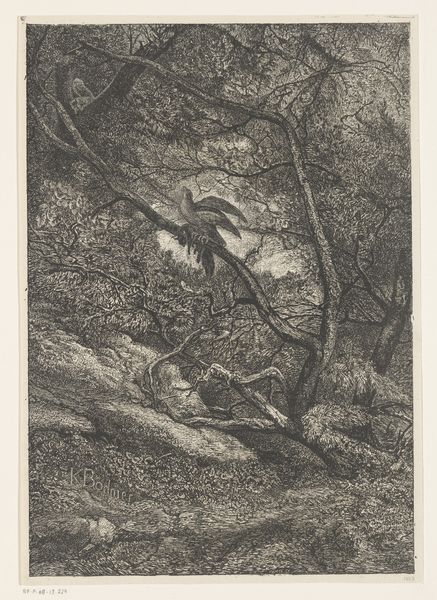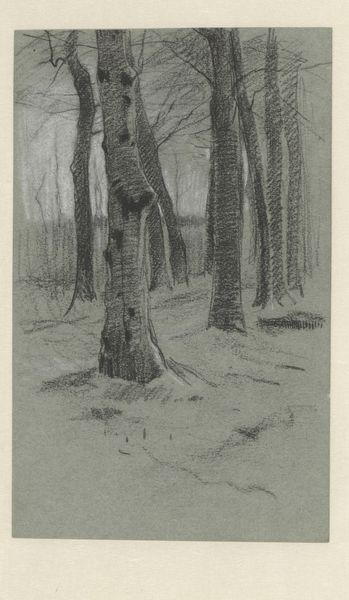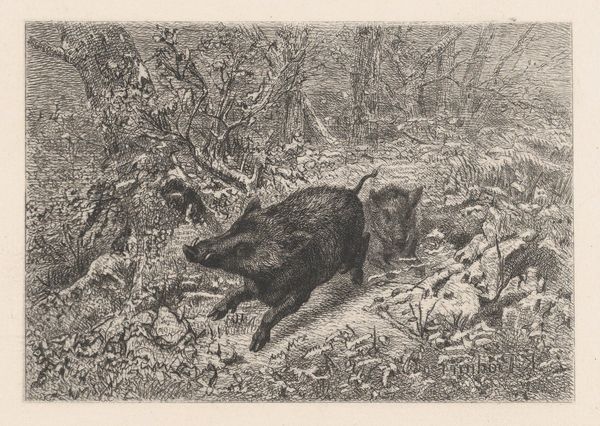
drawing, pencil
#
drawing
#
pen sketch
#
landscape
#
pencil drawing
#
pencil
#
naturalism
#
realism
Dimensions: height 296 mm, width 240 mm
Copyright: Rijks Museum: Open Domain
Editor: So, this is Karl Bodmer's "Kudde everzwijnen onder kale bomen," made in 1867. It's a pencil and pen drawing depicting a herd of wild boars under barren trees, held at the Rijksmuseum. The detail is amazing! It's quite a somber scene, especially with those stark trees. What strikes you when you look at it? Curator: The drawing places wild animals within a landscape setting, a popular trend reflective of 19th-century society's increasing interest in the natural world alongside rising concerns about vanishing wilderness. Bodmer wasn’t just documenting nature; he was also participating in a cultural conversation about our relationship with it. What message do you think he wanted to convey about our interaction with nature, in its purest form? Editor: I think he was illustrating a simple image, like something taken from real life, so his art isn’t trying to convey anything, perhaps reflecting the common romanticism of nature and the wilderness that’s being erased by urban development? Curator: Interesting. Consider also the perspective. We, as viewers, are positioned almost as observers on the fringe of their world. It prompts the viewer to be very observant. Do you believe this drawing might be referencing the political concerns of that time period and that society should be more involved, just like this painting pushes them to do so? Editor: It's almost like he wants us to understand what is at stake by preserving these species... Now, considering our interaction, the angle of the tree to guide our point of view… Maybe that wasn’t by chance at all, right? Curator: Exactly. Bodmer prompts consideration of our ethical responsibilities. And I see that artistic choices are always rooted in broader socio-cultural anxieties and values. Editor: I’ve never thought about this. Now I have a deeper comprehension about how we interpret this artwork, its original intention, and also how historical context is extremely important to our understanding. Curator: Indeed! Recognizing that connection elevates our experience beyond just seeing an image to comprehending art's position within social discourses.
Comments
No comments
Be the first to comment and join the conversation on the ultimate creative platform.
